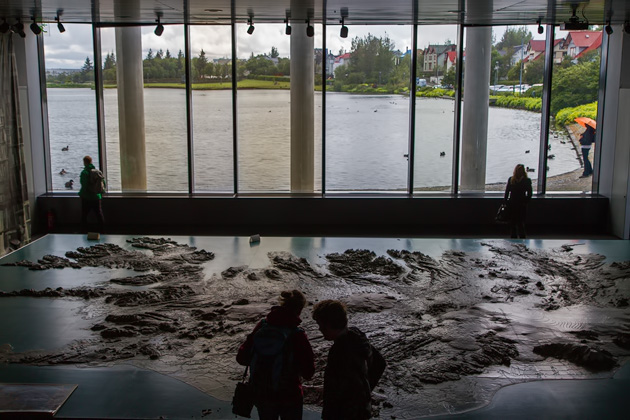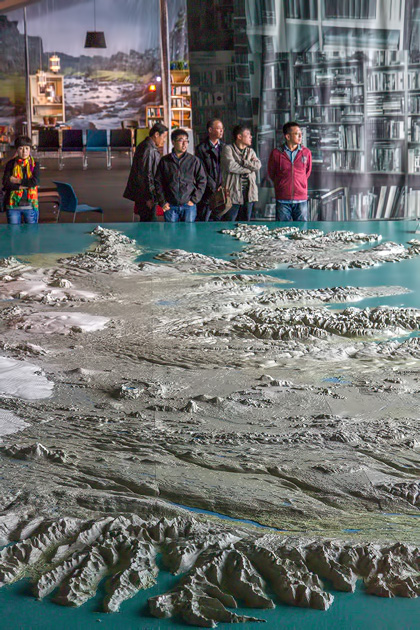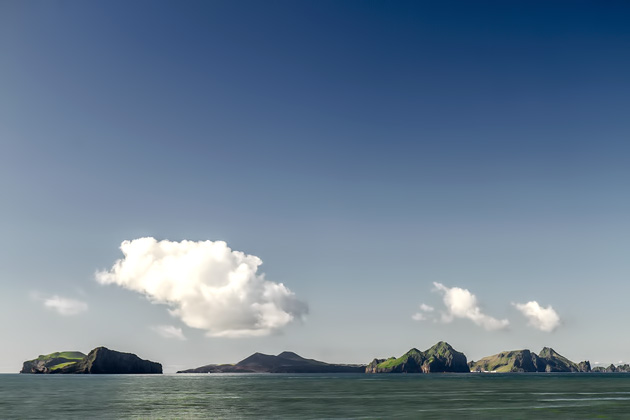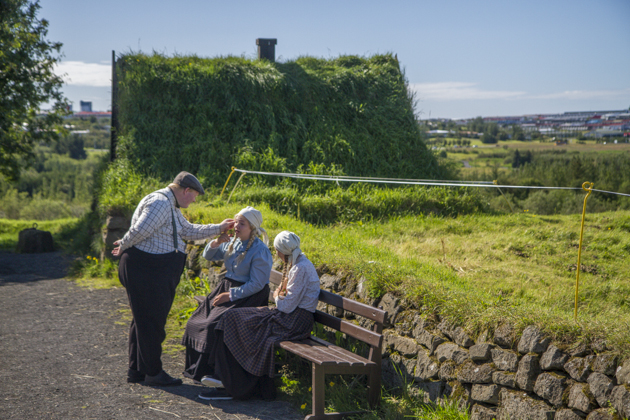Geologically speaking, Iceland is one of the Earth’s newborns. The island didn’t even exist until after the age of dinosaurs had passed, and it was the last European territory to be settled. Iceland continues to grow, still firmly in its adolescence, but its short history has been a volatile one. Whether they’ve been dealing with abusive Danes, glaciers, the plague or volcanic ash, Icelanders have had it rough. Here’s a rundown of the biggest events in the country’s history.
| 20 million BC | Iceland is formed by a series of volcanic explosions along the Mid-Atlantic Ridge, where the North American and European tectonic plates are pulling away from each other. |
| 847 AD | Norseman Ingólfur Arnarson settles down in present-day Reykjavík. For the next 150 years, scores of his countrymen follow, driven out of Norway by the harsh rule of King Harald the Fair-Haired. |
| 930 | The first annual Alþing, or parliament, is convened to govern the fledgling country, and the Saga Age commences. The exploits of Iceland’s founders are passed down orally, and eventually written out in magnificent manuscripts which would become the country’s greatest treasures. |  |
| 1000 | At the millennial Alþing, leaders vote to adopt Catholicism as the island’s sole religion, abandoning the Viking paganism of their ancestors. There are a few fights, but the conversion is remarkably peaceful. |
| ~1000 | Around the same time as the Catholic conversion, and five centuries before Christopher Columbus’s voyage, Icelandic explorer Leif Ericson discovers North America, which he calls Vinland. |
| 1262 | Iceland cedes its sovereignty to Norway and thus begins a 682-year period of vassalage to foreign powers. In 1380, power shifts to the Danish Empire. |
| 1402 | The Black Death arrives in Iceland. Half of the island’s population succumbs, just shortly after a massive volcanic explosion in 1386 which had devastated crops. Unhappy days in Iceland. |
| 1602 | Denmark squeezes its vice-like grip on Iceland with the introduction of a trade monopoly. Until 1786, Iceland is only allowed to trade with Denmark, and at absurdly unfair rates, leaving Icelanders in a perpetual state of financial misery. |
| 1786 | Laki erupts. What, never heard of Laki? The deadliest volcanic eruption in history, Laki spews clouds of sulfur dioxide that cause famine as far away as India. 25% of Iceland’s population is killed, and Laki is credited with over six million deaths across the globe. The crop loss attributable to Laki is one of the main factors which led to the French Revolution. |
| 1944 | World War II may have devastated Europe, but it’s a boon to little Iceland. British and American forces use the strategically-situated island as a base, and introduce roads and airports. On June 17th, 1944, Iceland is finally able to declare independence from Nazi-occupied Denmark. |  |
| 1975 | Iceland engages England in the closest its ever come to a military skirmish, after unilaterally extending its territorial waters to cope with dwindling cod stocks. The Icelandic coast guard cuts nets and rams foreign vessels, and the Brits send in the Royal Navy. The Cod Wars end only after Iceland threatens to close a NATO base on the island, forcing England to back down. |
| 2008 | Iceland’s banks had been deregulated in 2001, and suspect banking practices ensued almost immediately, setting the stage for the dramatic financial crisis of 2008. The stock market falls by 90% and customers across Europe find their accounts frozen. The government resigns, and all of the nation’s banks collapse. |
| 2013 and Beyond… | Iceland has emerged from its financial crisis just as strong as before, and with a pragmatic vision for its future. Using the landscape to its favor, Iceland has developed its natural geothermal and hydroelectric sources and is nearly energy independent. With one of the world’s most highly-educated populations and lowest crime rates, the country is well-poised to prosper in the future… at least until it’s ripped apart by volcanoes. |







Thanks for the tip about the book re: “The Sagas Of The Icelanders”.The topographic 3D map of Iceland is remarkably large, and looks very detailed. If it is an accurate mapping, then it must have taken quite a chunk of time to construct. It also shows me how proud the Icelandic people are of their tiny country.